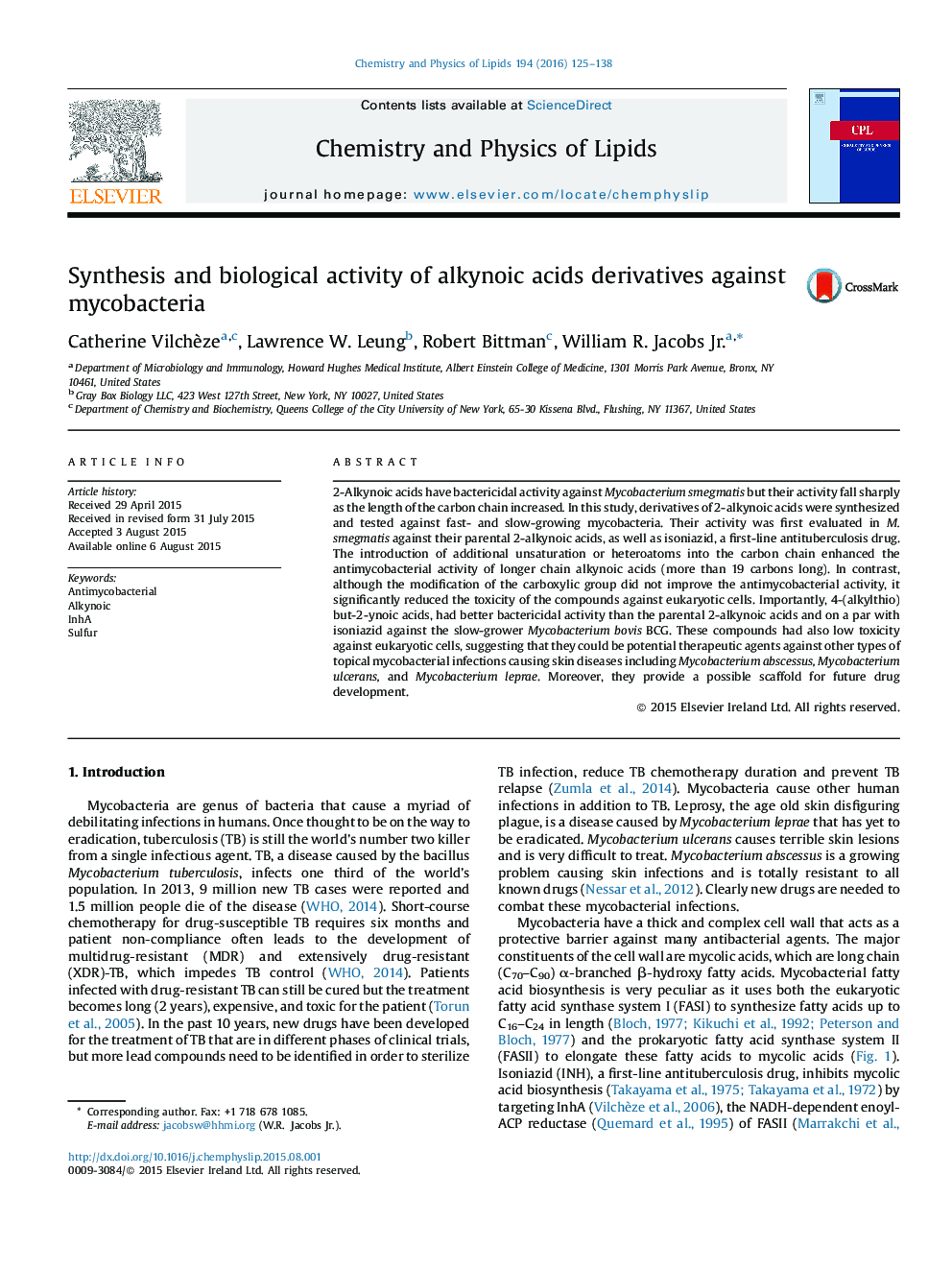| کد مقاله | کد نشریه | سال انتشار | مقاله انگلیسی | نسخه تمام متن |
|---|---|---|---|---|
| 1251550 | 1496283 | 2016 | 14 صفحه PDF | دانلود رایگان |
• 2-Alkynoic acids with modified carbon chain or carboxylic group were synthesized.
• Synthesis of these analogs was straightforward and could be easily scaled-up.
• Compounds were active against fast- and slow-grower mycobacteria.
• The best inhibitor had a sulfur atom at the 4-position in the carbon chain.
• Modifications of 2-alkynoic acids decrease their toxicity against eukaryotic cells.
2-Alkynoic acids have bactericidal activity against Mycobacterium smegmatis but their activity fall sharply as the length of the carbon chain increased. In this study, derivatives of 2-alkynoic acids were synthesized and tested against fast- and slow-growing mycobacteria. Their activity was first evaluated in M. smegmatis against their parental 2-alkynoic acids, as well as isoniazid, a first-line antituberculosis drug. The introduction of additional unsaturation or heteroatoms into the carbon chain enhanced the antimycobacterial activity of longer chain alkynoic acids (more than 19 carbons long). In contrast, although the modification of the carboxylic group did not improve the antimycobacterial activity, it significantly reduced the toxicity of the compounds against eukaryotic cells. Importantly, 4-(alkylthio)but-2-ynoic acids, had better bactericidal activity than the parental 2-alkynoic acids and on a par with isoniazid against the slow-grower Mycobacterium bovis BCG. These compounds had also low toxicity against eukaryotic cells, suggesting that they could be potential therapeutic agents against other types of topical mycobacterial infections causing skin diseases including Mycobacterium abscessus, Mycobacterium ulcerans, and Mycobacterium leprae. Moreover, they provide a possible scaffold for future drug development.
Journal: Chemistry and Physics of Lipids - Volume 194, January 2016, Pages 125–138
